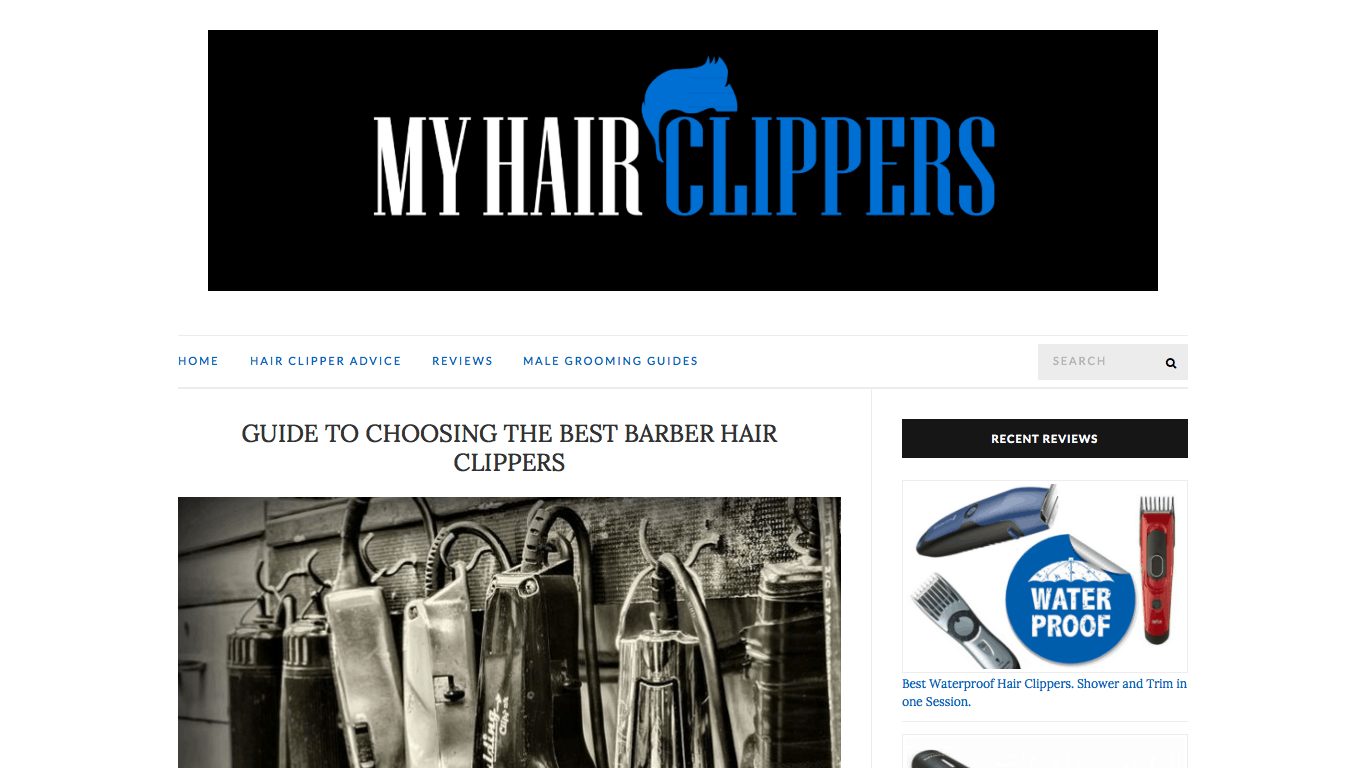Creating an affiliate ecommerce store is one of the easiest ways to for you to cash in on Amazon’s huge success.
Amazon is the undisputed leader in ecommerce, generating more than $135 billion in revenue last year. They continue to dominate the market by working with other people. And you have the opportunity to cash-in on Amazon’s success by creating an Amazon affiliate store.
What Is Affiliate Marketing?
I love affiliate marketing because it is the least stressful way to earn money from selling products online. Inventory, shipping, payments, customer service and returns are all handled by the site that you’re sending customer to. Your only responsibility is educating customers and helping them learn about the products your partner is selling.
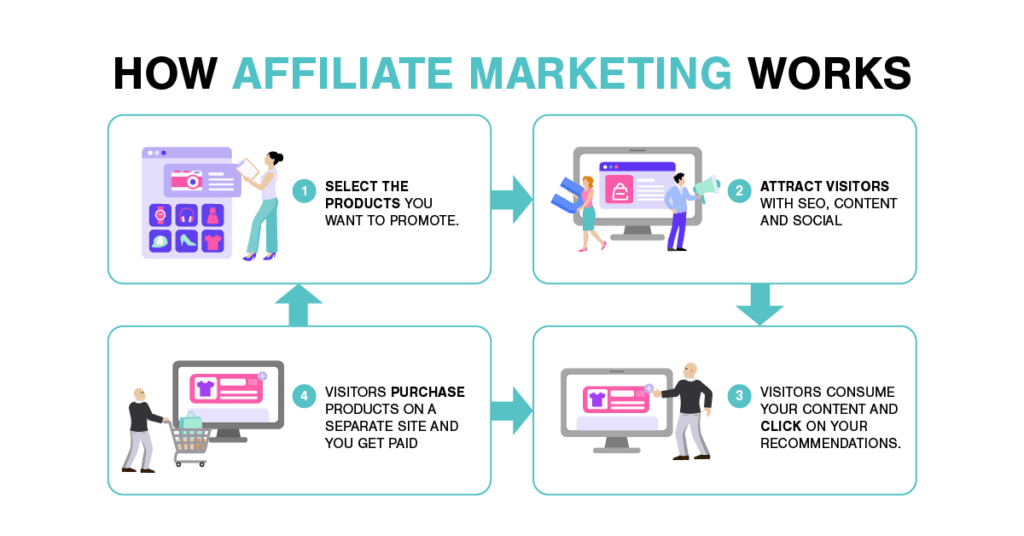
If you combine affiliate marketing with your own product line, you can earn even more! But, you will increase the hassle-factor.
Amazon Affiliate Store Examples
Your job, as an Amazon affiliate, is to help online shoppers learn about the products that are best suited to solve their problem – based on your expertise. If you aren’t knowledgeable, you won’t be able to guide them to the perfect solution. And, if you aren’t passionate, you’re going to burn out before you see a meaningful revenue stream
The examples below use content to attract and educate readers then give them a gentle nudge to buy. Some look like ecommerce sites with “Buy Now” buttons, while others look more like blogs. Check out these successful Amazon affiliate sites:
thisiswhyimbroke.com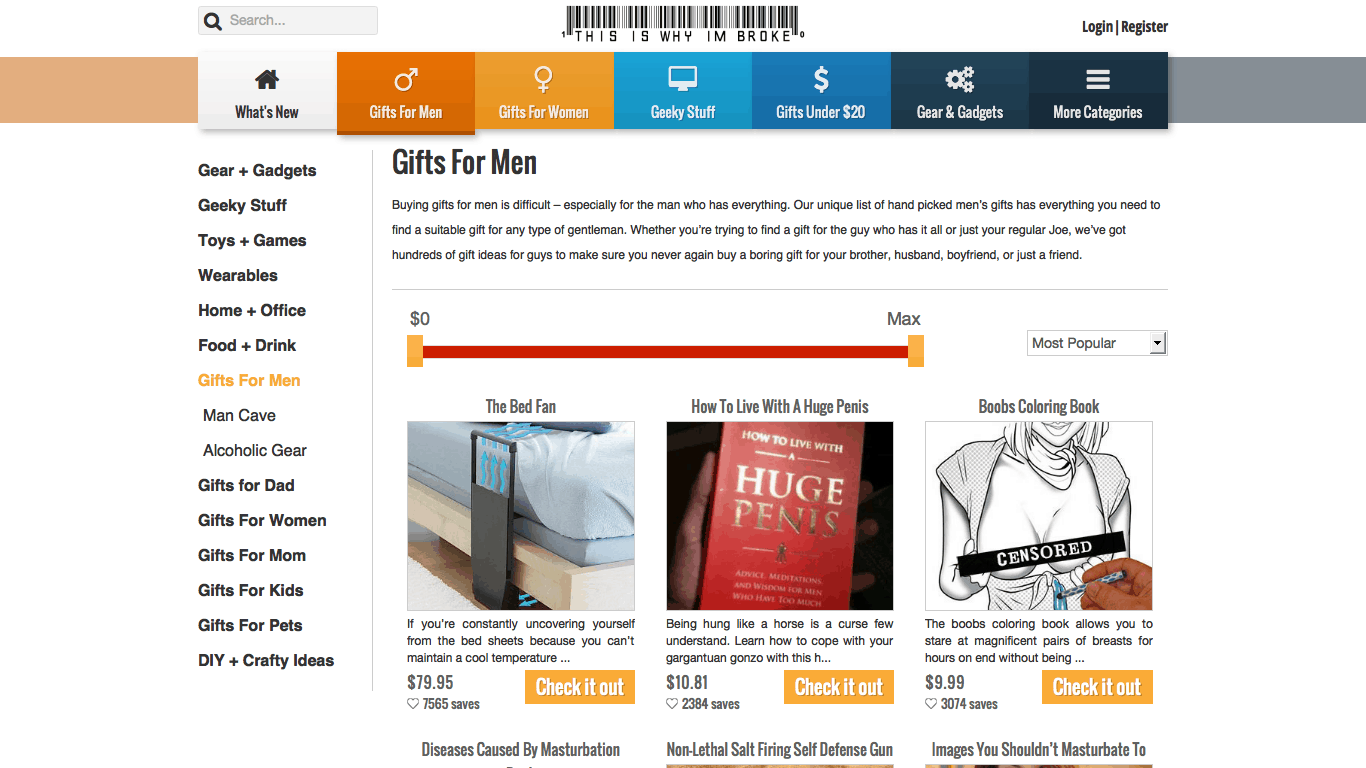
home-designing.com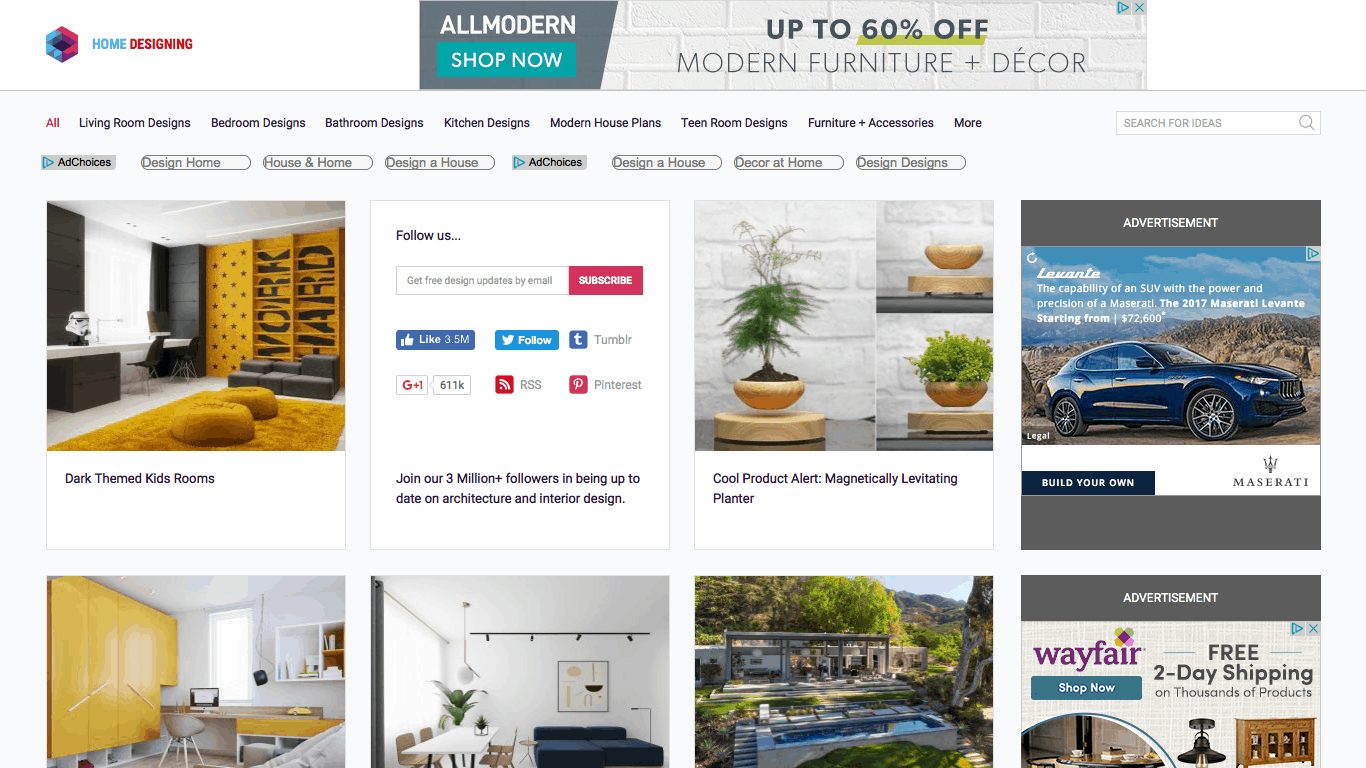
thewirecutter.com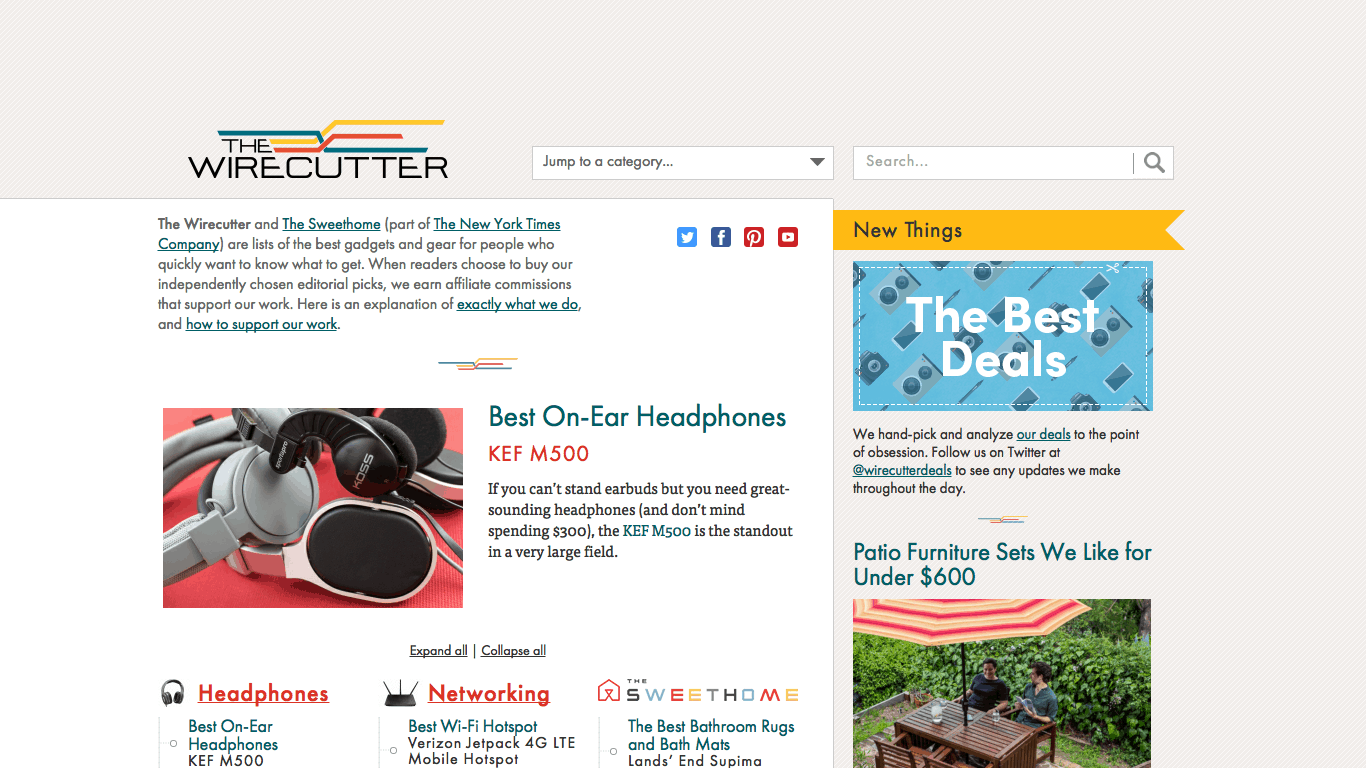
Autoblog.com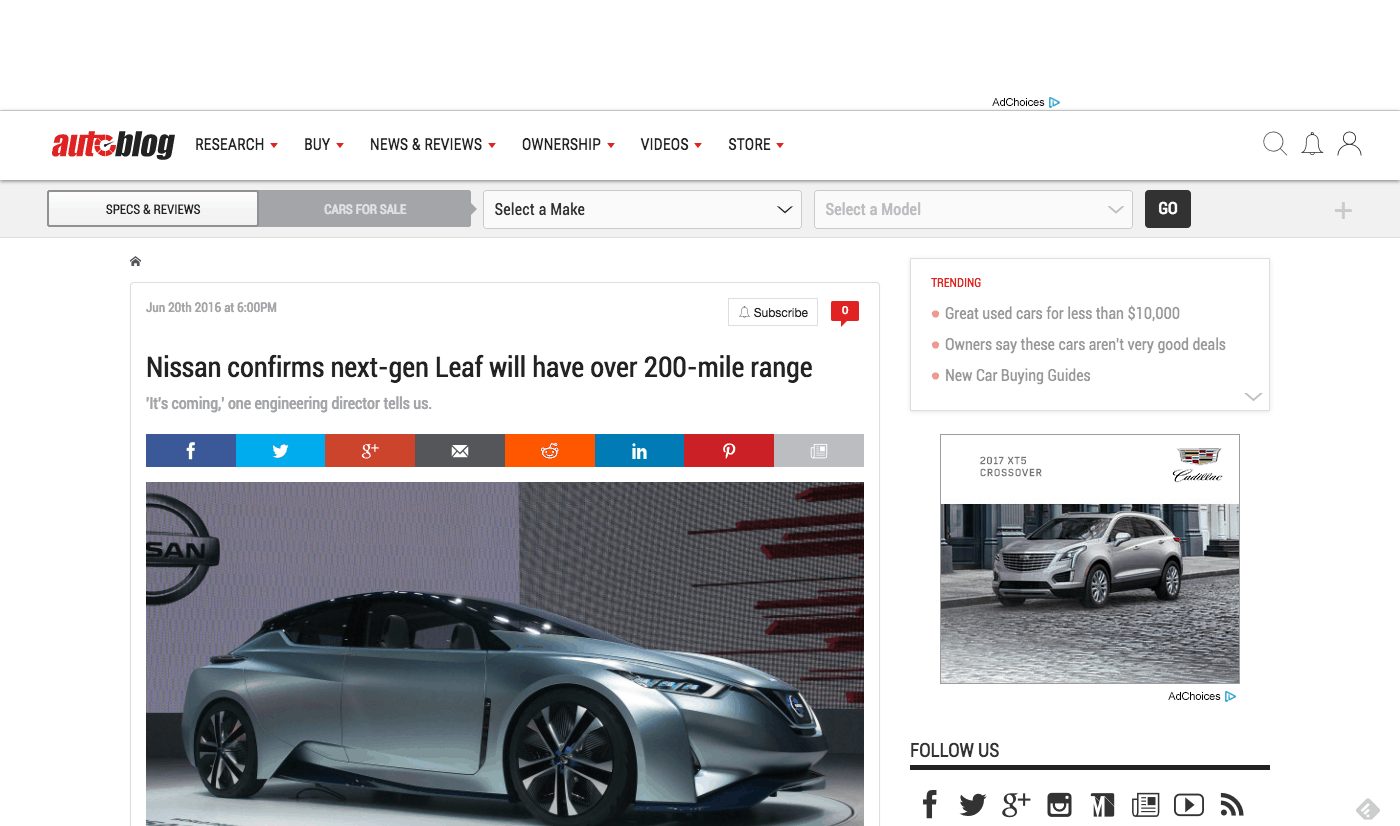
makesushi.com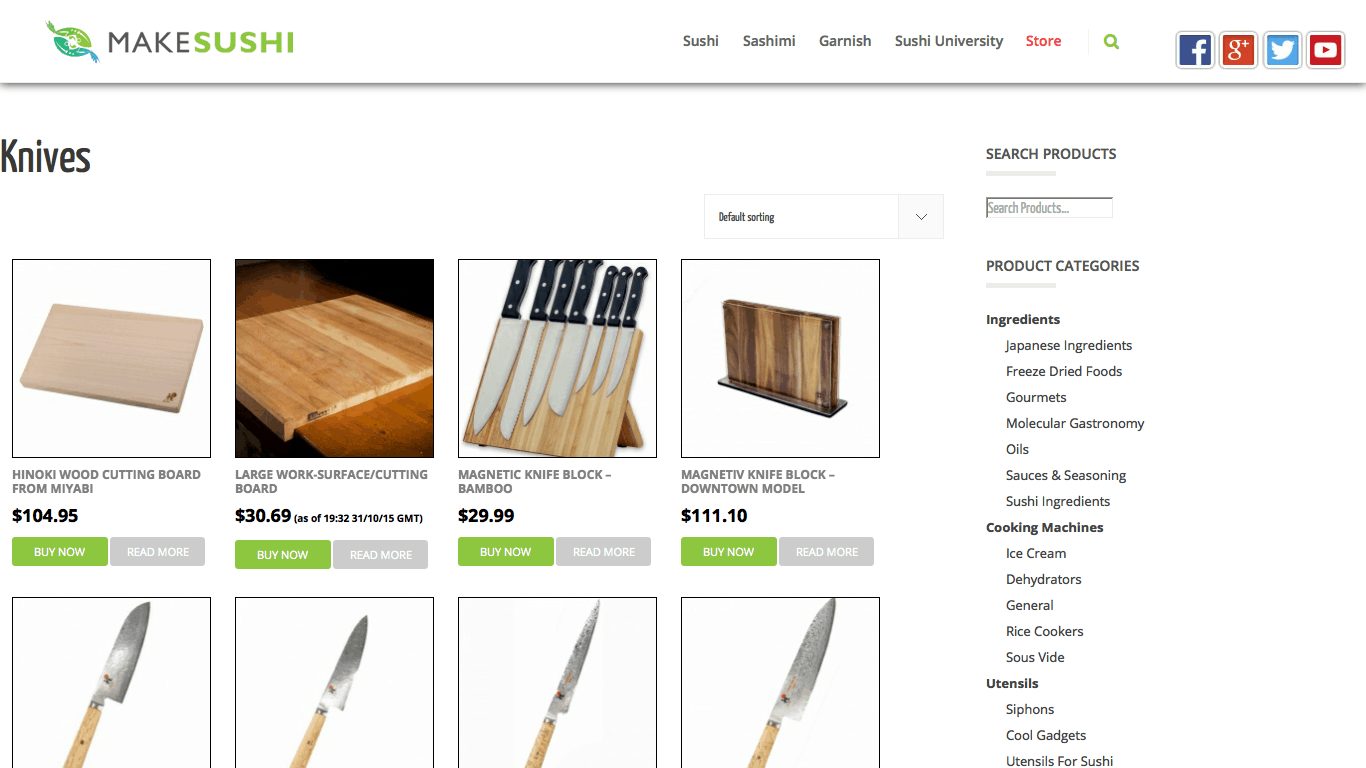
www.headphone.com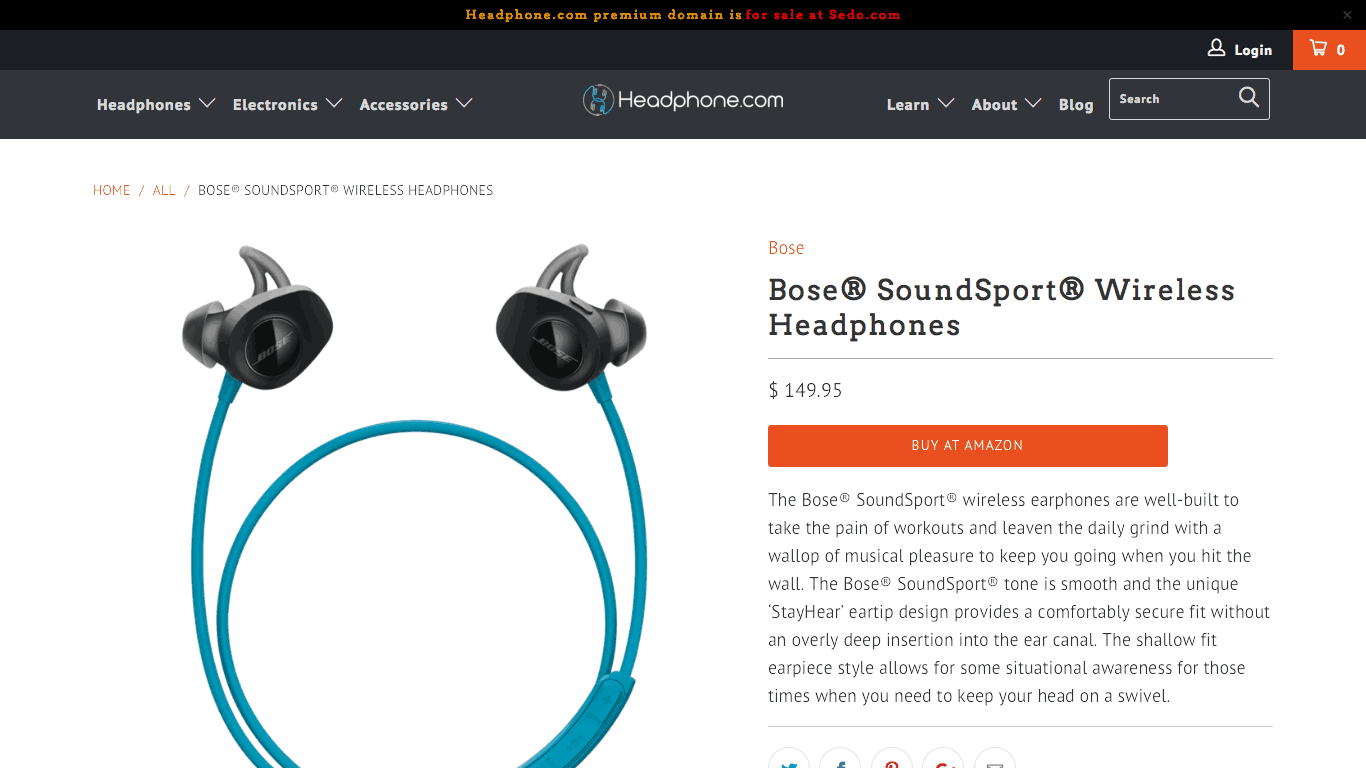
As you can see from the examples above, ecommerce affiliate websites come in all shapes and sizes. Here’s what you’ll need to get your own Amazon Affiliate shop:
- A well-defined niche that you’re passionate and knowledgeable about.
- A WordPress theme with an ecommerce plugin.
- A reliable host for your website.
- An Amazon affiliate account will allow you to list products from Amazon’s online store on your site.
- An affiliate marketing program that matches your passion and preferred market.
- Your own line of branded products.
- Professional, engaging product photos for your product pages.
Steps to Building Your Amazon Affiliate Store from Scratch
Now that you know what you need, it’s time to put all of the puzzle pieces together.

Let’s take a look at the first steps you’ll need to complete in order to start generating revenue from your site.
1. Join Amazon’s Affiliate Program
In order to earn bounties and commissions from Amazon, you need an affiliate account. It only takes a few minutes to fill out, and the majority of applicants are approved within 24 hours.
First, head over to the Amazon Associates page and review the terms for Amazon’s affiliate program (Amazon Associates Operating Agreement). You’ll learn about the different tools that Amazon provides to their partners, along with the various types of revenue you can generate.
For example, digital purchases and physical product orders are treated differently. In general, any order that a customer places within 24 hours of reaching Amazon through one of your links is counted towards your commission. And, if they add something to their cart during this period, as long as they checkout within 89 days of their initial click through, you’ll receive credit for the completed transaction.
After you’ve completed the application, you’ll receive an email confirming your approval into Amazon’s associate program. You’ll also gain access to a dashboard with a ton of helpful info. And, most importantly, you’ll find the unique codes you’ll need to inject into your site.
2. Select the Products You Want to Drive Customers To
While you’re waiting for your application to be approved, it’s a good idea to spend some time researching the wide variety of products that Amazon carries. Selecting the right products to help market will have a major impact on how much money your site generates.
Keep in mind that you will be earning a percentage of the total cost for the products you promote. Helping an online shopper find a $3 pair of socks is far less rewarding than helping them purchase a $2,000 Smart TV.
You can pay attention to the number of customer reviews that a product has, in order to guesstimate how popular certain items are. But, more advanced affiliate marketers use tools like Jungle Scout to access hidden information about product trends.
And keep in mind, the cost of an item isn’t the only determining factor in choosing which items to promote. In my sock vs. smart tv example, it could turn out that the higher number of socks that are sold actually outweighs the difference in earnings from the single purchase of a smart tv.
3. Snag a Memorable Domain Name
Once you’ve selected a niche market to serve, it’s time to find a memorable domain name that is relevant to the products you’ll be marketing, and easy for your future visitors to remember.
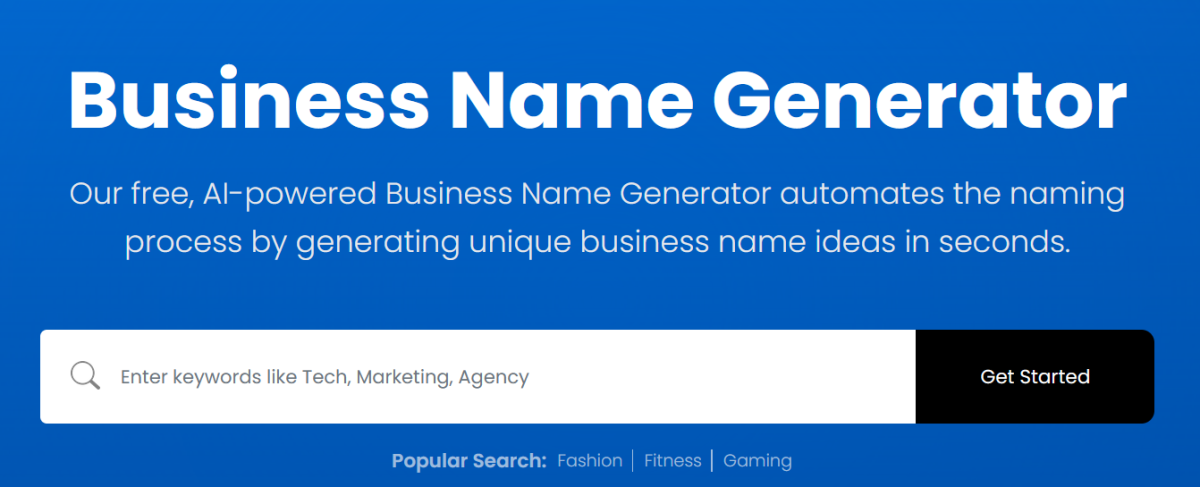
Your domain name is the address that online shoppers will type into the address bar of their web browser in order to reach your website. It’s like the address for your home.
Coming up with a memorable name is easier said than done. In fact, branding agencies charge buku of cash just to come up with a catchy brand name for a company.
If you are short on ideas (and cash) you can check out these brand name generators:
- https://businessnamegenerator.com/
- https://www.dotomator.com/
- https://www.naming.net/
- https://www.rhymer.com/
4. Install WordPress and Select a Theme
We already covered how important a reputable host is for your website. The vast majority of hosting companies provide you with access to cpanel. Cpanel makes it easy to install a content-management system, like WordPress, onto your server.
Click here for an in-depth guide on using WordPress to build your ecommerce site. Mastering WordPress is a great way to avoid expensive invoices from a web designer, without spending months learning how to code.
After WordPress is installed, it’s time to select a theme that will help your WordPress site jump off the screen. Your theme serves as the framework for the site – providing a color scheme, content layout and different elements, including sliders and hero boxes.
For starters, take a look at these killer ecommerce WordPress themes:
- Adot – $59
- Uplift – $59
- DMCS – $59
- Savoy – $59
- Atelier – $64 (the one I’m using on my ecommerce site)
- Merchandiser – $69
Most of these themes, depending on where you purchase them, will offer additional support for novice users for a nominal fee. This can be a huge help in closing the gap between a do-it-yourself solution and a professionally crafted site.
Remember, your most important factor in selecting a theme is finding one that will help you convert visitors into customers. As long as your theme is easy to navigate and allows you to layout your content in an informative, engaging way, you’ll have a solid foundation upon which to build your affiliate site.
5. Install A WordPress Affiliate Plugin
Once your site is setup with WordPress and you’ve selected the market you’ll be attacking, it’s time to take advantage of the many plugins that WordPress offers. Just like themes, some are free, others do cost money – either monthly or one-time up-front.
Get AAWP is a must if you are doing any type of Amazon Affilite marketing
Thirsty Affiliate is another one of my favorite WordPress plugins for affiliate marketing because it helps me track what people are actually clicking on – versus scrolling past without interacting. Measuring clicks is an important way to understand what areas of your site are working (generating commissions).
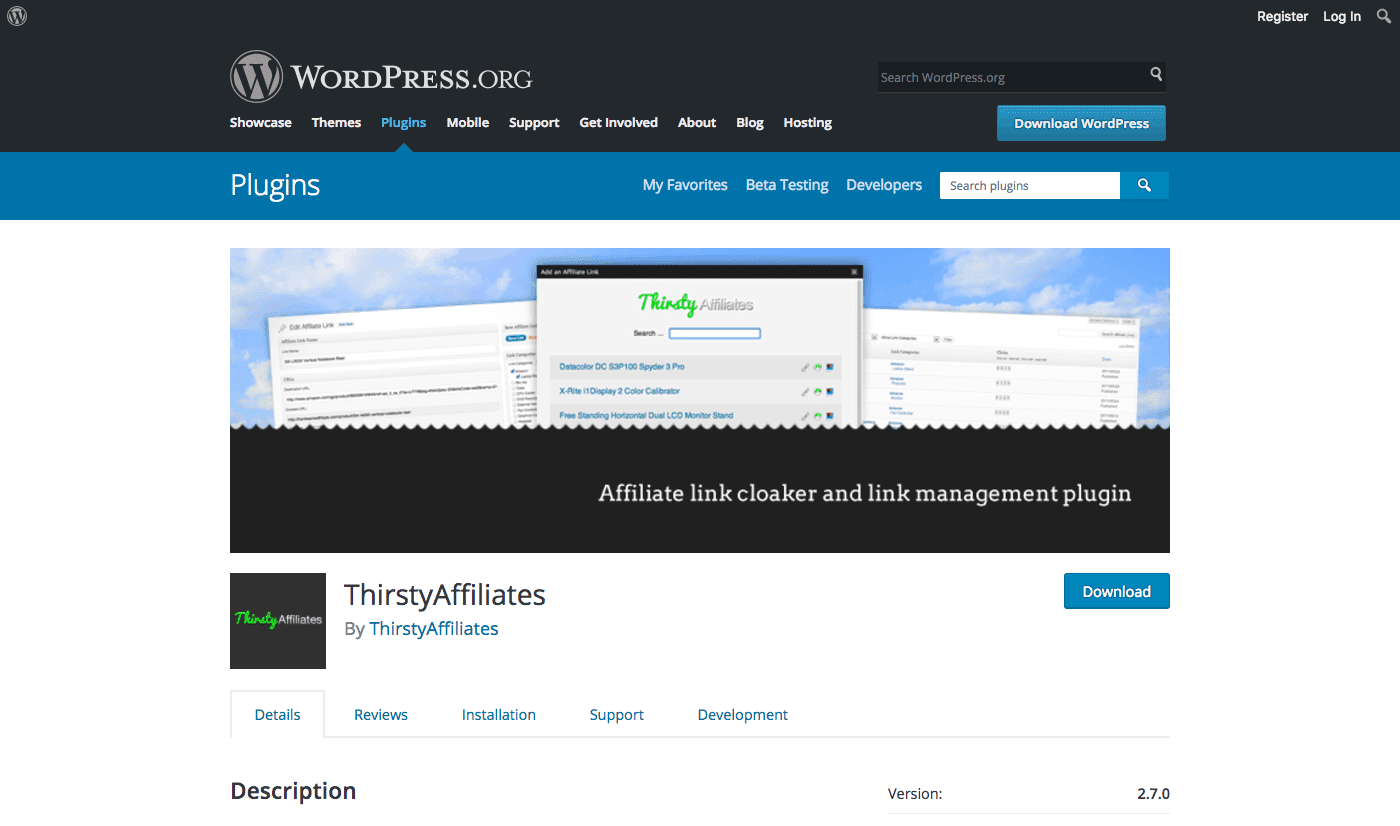
Shareasale is another one you can use.
By looking at what people are clicking on, you can figure out if the audience that is reaching your site is simply browsing, or ready to buy. This can help guide your efforts to optimize your site for different keywords – helping you realize that certain terms bring in browsers, and you need to keep looking for new keywords that bring in motivated buyers.
6. Inject Your Starter Content into Your Ecommerce Site
Now it’s time to fill your site with powerful content that helps readers make an informed buying decision. Think about the questions your future customers will need to answer in order to feel confident when adding an item to their cart.
For inspiration, head over to Google and type in a phrase related to your category of products. Be creative. Think about how a shopper would phrase their question.

In the example above, I typed in “best summer clothes for” and I let Google suggest the ending. This tells me that people who are shopping for clothes are looking to find fashions and styles that compliment their body type.
So, if my goal was to help Amazon sell clothing, I would start by writing a ton of content about matching trendy styles with specific body-types. Within the content, I would link to different products that Amazon sells.
Remember, this is only the beginning. Based on how your site’s visitors interact with this initial content, you’ll be able focus the future content you write.
7. Setup Your Social Media Accounts to Amplify Your Content
Social media is one of the most effective ways to connect with your audience. And, it will make it much easier for people that “like” your website to learn about new content that’s published on your blog – plus, getting the word out about money saving opportunities via a tweet or a post is an excellent way to re-engage shoppers that were on the fence.
The types of products you promote will help to inform which social media channels you invest the most energy into. For example, Pinterest is far more popular with women than men in the US.
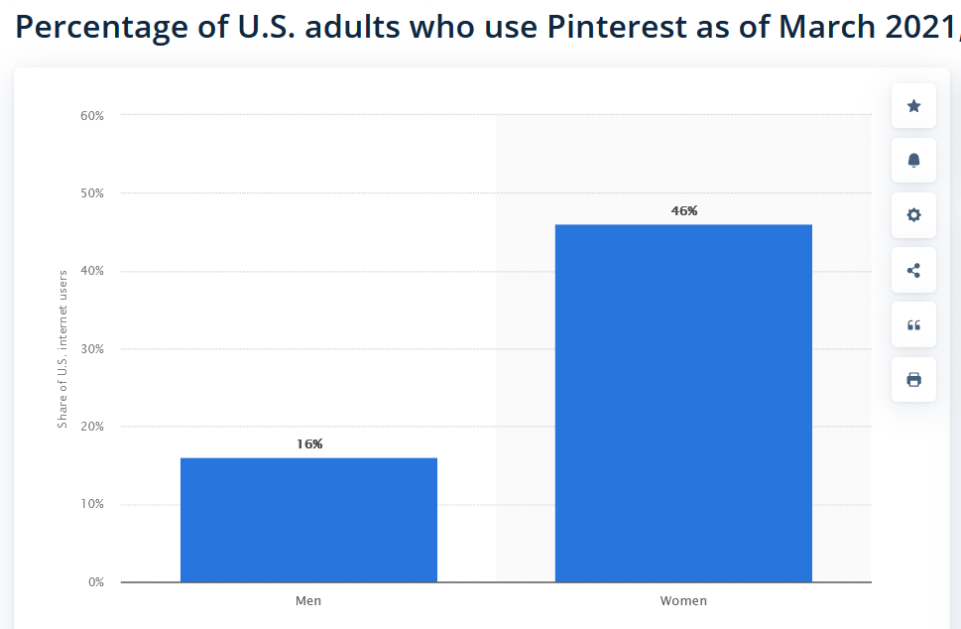
Tips for Creating a Powerful Social Media Presence:
- Use the same logo and color scheme across all channels to help visitors recognize your brand.
- Share new content with your followers whenever you publish it to your site.
- If there’s an opportunity to save money, let your followers know by providing them with your affiliate link.
- Encourage your most motivated readers to message you with questions. Respond quickly to PM’s – your average response time is published.
- Find opportunities to cross-promote content with other established social media pages in your space.
- Social media isn’t the best place to sell – it’s better to educate and engage.
8. Use a Content Calendar to Ensure Fresh Content is Added to Your Site Weekly (If Not Daily)
92% of marketers say that fresh content is an effective way to generate traffic online. Why? Because Google’s primary goal is to answer their user’s questions in an efficient, accurate way. And, the sites that have the most in-depth, current content generate that organic search traffic.
Google is especially important for ecommerce sites because 81% of customers use Google to search for information before making a buying decision. If your affiliate site is part of the customer’s research, right before they make a big purchase, your tracking cookie will ensure that you get credit for the sale.
To help ensure your site remains current, with fresh content that’s useful to your audience, a content calendar is key. Spend a few hours at the beginning of the month planning out which topics you’ll cover each week. Writing a fresh blog post every few days, and strategically placing links to other relevant pages on your site is a great way to help site visitors engage with every part of your site.
A strong content calendar:
- Has wildcard days for current/trending events to be covered.
- Features topics that build on previous articles – allowing for natural linking between site pages.
- Helps writers remain mindful of upcoming topics – helping them pay attention to useful information they come into contact with throughout the week.
- Include a mix of how-to guides, list posts, roundup posts, product reviews, best X for y posts.
9. Review Amazon’s Affiliate Rules to Avoid Losing Affiliation
After you’ve built up your initial site and installed a few plugins to help automate things, it’s time to take a break from designing and writing. Understanding Amazon’s policies surrounding affiliate sites is important – if you run afoul of their rules, you may lose the ability to earn money from their platform.
Wouldn’t it be heartbreaking to spend all of the time and money required to build your site, only to have your affiliate account blocked? Paul James has a great video overview.
Key Rules for Operating an Amazon Affiliate Site:
- Your site cannot contain sexually explicit or obscene materials.
- Your site cannot promote violence.
- Claims made on your site must be factual.
- You cannot use other people’s intellectual property without permission.
- If your special links are formatted improperly, you may lose out on commissions.
- If you mention limited-time promotions, references to promotions must be removed from your site prior to their end-date.
- Product pricing and availability can only be displayed on your site if you use the automated tools that Amazon provides for keeping availability and pricing information up-to-date. You may not manually type out pricing or product availability information on your site.
- You must clearly disclose that your site has an affiliate relationship with Amazon.
10. Analyze the Data to Decide on Your Own Product Line
As your site grows, you’ll probably begin to realize that you’re leaving a lot of money on the table by sending all of your traffic to Amazon. One of the best ways to improve the earnings from your site is by creating your own line-up of products. Ideally, these would compliment the products you’re already promoting on behalf of Amazon.
For example, you could have an affiliate site selling home decor, then realize you can sell art on your own site and maximize your profit margins. You can also take the Amazon FBA route.
I like to use an affiliate site to learn about the market. Based on how buyers interact with the information I publish, and the products that those buyers end up adding to their cart, I can focus my own efforts to launch a product line that meets their unique needs.
If you can use your affiliate marketing site to establish yourself as an authority in a niche market, it’s much easier to introduce a new product line. And, as you begin to build a customer base for your products, you can take advantage of more lucrative opportunities to help market complementary brands and products – both off and on Amazon. As long as you focus on customer loyalty, profits will come.
11. Encourage Visitors to Sign Up for Your Mailing List
As users interact with your site, it’s important to find opportunities to build a long-term relationship. One way to do this is by offering your site’s visitors something they value, in return for their contact details. This gives you a direct line of contact to engage them again in the future.
If you think about your site’s visitors the same way a company thinks about retaining existing customers, you’ll quickly realize that it’s far more cost-effective to keep an audience engaged with your site, than it is to find a new audience.
Email marketing, done correctly, is an excellent way to re-engage site visitors. But, your email marketing can’t be spammy. First, you’ll start getting filtered out by major email providers (like Google) if multiple recipients report your mailing as spam. Second, you’ll only aggravate potential repeat customers if you fill up their inbox with content they don’t find useful.
Ingredients for a killer email marketing campaign:
- Give site visitors the opportunity to provide their email address in return for a special discount or helpful information (How To Guide, Product Research, etc.).
- Use the first email to outline what they should expect in your future emails. A series of 10 helpful tips for XYZ is a popular format.
- Encourage the email recipient to visit your site for more information – avoid overly promotional content. The goal is to provide valuable information in their inbox that helps them trust your site as a provider of a solution to their problem.
- Ensure that recipients can easily unsubscribe from your mailing list.
12. Find Additional Opportunities to Affiliate with Complimentary Products
Amazon is a great initial partner for your affiliate marketing site. Their brand is well respected, and their extensive product catalog makes it easy for even niche markets to find the products and services they need.
But, Amazon pays out relatively low commissions to their affiliate marketers. You’ll find other online stores will provide a higher payout for the sales that your efforts generate. But, keep in mind, a higher commission rate doesn’t always lead to more money in your pocket. Justine Grey has a fantastic list of affiliate programs on her site.
Things to Consider when Assessing an Affiliate Marketing Agreement:
- How well is the seller’s site optimized to convert visitors into buyers?
- Is the brand well established? Will the customers you send them feel comfortable completing their transaction?
- How hard will you have to work in order to send targeted traffic to their website?
- Do their products directly compete with the product lines you offer on your site?
Amazon makes it extremely easy to judge how effective your site is when sending traffic to their content. Other smaller websites will not have the same sophisticated tools to help you earn more sales. So, carefully consider a new partnership before signing on the dotted line.
13. Balance Your Lifestyle to Match Your Best Revenue Generating Opportunities without Burning Out
As your site grows, you’ll have more and more opportunities to generate revenue for you and your family. Be careful. It’s easy to get burnt out. Instead of chasing every opportunity, try to focus your efforts on one or two projects at a time.
We discussed earlier that you can earn significantly more money by selling your own products, in addition to sending traffic to other sites in return for a commission. When you choose to sell your own products, you become responsible for:
- Product Development
- Product Marketing
- Order Fulfillment
- Customer Service
- Returns and Exchanges
- Liability for the Product’s Use
I’ve felt overwhelmed more than a few times during my journey to affiliate marketing success. If you want to avoid burnout, I recommend:
- Scheduling regular vacations away from work. You’ll return more refreshed and be a lot more effective.
- Use the pomodoro technique to ensure you take regular breaks throughout the workday.
- Invest in comfortable, ergonomical seats, desks and keyboards. Carpal tunnel and repetitive strain injuries aren’t fun – and they definitely have a negative impact on productivity.
- Write your blog articles at the beginning of the month. Then, schedule their publication in WordPress. This is a huge time saver.
Are You Ready to Build Your Own Amazon Affiliate Store?
We’ve covered a lot of ground in this guide. From signing up with Amazon’s Associate program, to building an ecommerce store in WordPress, you should have the information necessary to create a solid revenue stream for you and your family.
And, if you feel extra ambitious, you can launch your own products alongside the items you’re promoting for Amazon. I hope my suggestions help you to launch quickly and with minimal frustration. Once you ramp up your affiliate site and traffic – you may want to launch a private label brand.
If you have additional questions, I’d love to answer them in the comments section below!
